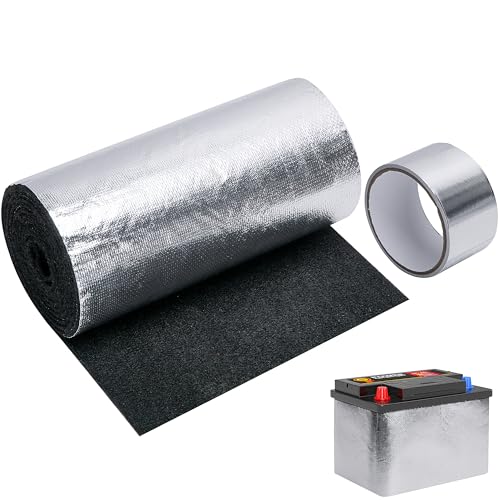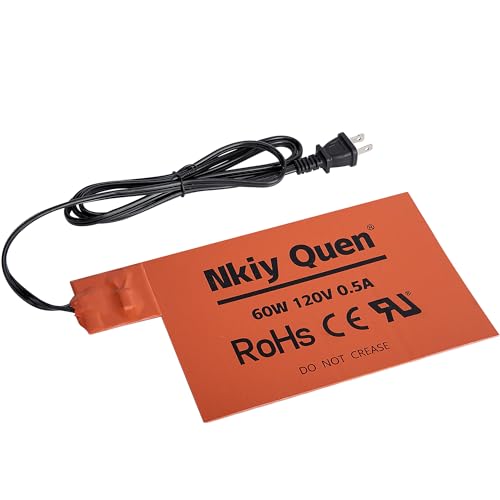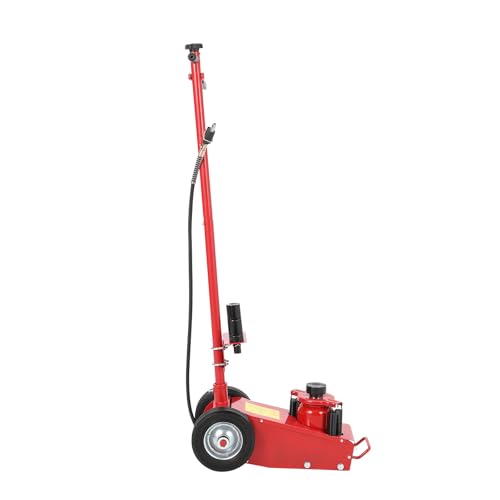
Car Battery Care Tips for Winter Weather

You should keep your car battery fully charged in winter since cold slows chemical reactions, reducing starting power and risking failure.
Drive longer routes to recharge properly, avoid short trips, and check voltage regularly (ideally above 12.5V).
Clean and secure terminals to prevent corrosion and poor connections.
Park in a sheltered spot or garage to reduce exposure to freezing.
Using battery warmers or maintenance chargers also helps preserve battery health.
Explore these techniques to guarantee reliable starts in cold conditions.
Table
- Main Points
- Why Cold Weather Affects Car Batteries
- Maintaining Proper Battery Charge During Winter
- Recommended Driving Habits to Support Battery Health
- Best Parking Practices to Protect Your Battery
- Inspecting and Cleaning Battery Terminals Regularly
- Choosing the Right Battery for Cold Climate Conditions
- Using Battery Chargers and Warmers for Winter Protection
- Frequently Asked Questions
- Final Thoughts
Main Points
- Keep your battery fully charged by driving at least 15–20 km regularly or using a maintenance charger during winter.
- Park your car in a garage or sheltered spot to protect the battery from freezing temperatures and harsh winds.
- Inspect and clean battery terminals frequently, removing corrosion and applying Vaseline to prevent future buildup.
- Choose a high CCA or AGM battery designed for cold weather to ensure reliable starting power in low temperatures.
- Avoid short trips and limit electrical accessory use immediately after starting to reduce battery strain in winter conditions.
Why Cold Weather Affects Car Batteries
Because cold temperatures slow the chemical reactions inside your car battery, its ability to generate electricity decreases considerably. At 0°C, even a fully charged battery loses about a third of its starting power, reducing the power output necessary to crank your engine. During winter months, this decline intensifies the risk of starting failure, especially since your engine demands more energy in the cold. Aging batteries, particularly those older than four years, are more vulnerable to these effects due to diminished capacity and internal wear. Proper battery maintenance becomes critical; regular battery testing can identify weaknesses before they lead to breakdowns. Additionally, a low charge increases the chance of electrolyte freezing, which damages cells irreversibly. Understanding these factors empowers you to protect your battery against cold weather challenges effectively. For best results, consider using a car battery tester to monitor your battery’s health and catch problems early before winter temperatures cause unexpected failures.
Maintaining Proper Battery Charge During Winter

To maintain your battery's charge during winter, you should follow a regular charging routine, especially if your vehicle sits unused for extended periods. Use maintenance chargers like the Exide 12/7 or 12/15 to provide steady, controlled power that prevents discharge. This approach helps guarantee your battery voltage stays above 12.5 volts, reducing the risk of starting problems in cold weather.
 Budget-Friendly Seasonal Maintenance Tips for Students
Budget-Friendly Seasonal Maintenance Tips for StudentsRegular Charging Routine
Although cold weather puts extra strain on your car battery, maintaining a regular charging routine can prevent performance issues and extend battery life. If you don’t drive regularly, recharge your battery every 4 to 6 weeks to avoid capacity loss caused by cold weather. Short trips won’t fully recharge your battery since the alternator needs at least 15 to 20 km to restore ideal charge. Monitor your battery voltage with a multimeter to guarantee it stays above 12.5V—a key indicator of a healthy battery. For vehicles left idle long-term, a maintenance charger preserves charge without risking overcharging. By adhering to a disciplined charging routine, you safeguard your battery’s performance and enhance reliability during harsh winter conditions. In addition, having a portable jump starter like the NOCO Boost Plus GB40 can provide peace of mind by ensuring you have power when you need it most.
Use Maintenance Chargers
Anyone who leaves their vehicle unused during winter should consider using a maintenance charger to keep the battery at an ideal charge. A maintenance charger, like the Exide 12/7, provides a slow, steady current that keeps your battery charged without overcharging. In cold weather, this is essential to prevent a dead battery and extend battery lifespan. Using a trickle charger every 4–6 weeks guarantees voltage doesn’t drop below 12.5V, the critical threshold where performance degrades. For those parking outdoors, a battery maintainer keeps the battery warm and charged, preventing freezing damage. If you lack convenient access to power, a solar-powered charger offers an independent solution, maintaining your battery’s charge sustainably. Employing these methods liberates you from unexpected battery failures during harsh winters.
Recommended Driving Habits to Support Battery Health

To support your car battery during winter, avoid taking short trips that don’t allow the alternator to fully recharge the battery. Limit the use of electrical accessories before shutting off the engine to reduce battery load on your next start. Consistently driving longer distances helps maintain ideal battery charge and extends its lifespan.
Avoid Short Trips
When you frequently take short trips, your car’s alternator doesn't get enough time to fully recharge the battery, which can lead to energy deficits and increase the risk of battery failure in cold weather. In winter, cold temperatures already compromise battery performance, making it essential to avoid short trips that fail to adequately recharge the battery. To maintain peak car battery health, aim for longer drives of at least 15–20 km, allowing the alternator to fully restore charge and guarantee consistent battery operation. Combining errands into a single journey minimizes repeated short trips, reducing strain on the battery. Regularly have your battery tested during winter to assess its capacity and performance, preventing unexpected failures. Prioritizing longer drives empowers you to sustain reliable vehicle function despite cold conditions. In addition to these habits, carrying a 10 in 1 Car Jump Starter can provide extra peace of mind and a safety net in case your battery fails during winter.
Limit Accessory Use
Long drives help recharge your battery, but managing accessory use plays a significant role in maintaining that charge. To protect your battery during cold weather, you should limit accessory use, especially immediately after you start your car. This reduces the load on your battery and allows the alternator to restore its charge efficiently. Follow these steps:
- Avoid using seat warmers, radios, and other electrical accessories for the first few minutes after starting your car to minimize battery strain.
- Turn off unnecessary lights, including dim headlights and interior lighting, to conserve power and preserve battery health.
- Before shutting off the engine, disable accessories to reduce the load on battery terminals for the next start.
These habits support the overall health of your battery and extend its lifespan during winter’s demands.
Best Parking Practices to Protect Your Battery

Although extreme cold can severely impact your car battery’s performance, you can mitigate this by choosing ideal parking locations. To protect your car battery, park your car in a garage whenever possible, as it shields the battery from freezing temperatures. If garage access isn’t available, opt for outdoor spots shielded from harsh winds to maintain battery efficiency. Using a car cover adds an insulating layer against frost and snow, further preserving battery health. In cold weather car battery scenarios, consistently keeping your battery charged is essential; parking in locations protected from extreme temperature fluctuations helps maintain charge levels and reduces strain on your battery charger. Selecting parking spots that moderate temperature extremes guarantees your battery remains reliable and extends its lifespan throughout winter.
Inspecting and Cleaning Battery Terminals Regularly

Protecting your battery from cold starts with proper parking is only part of maintaining its performance during winter. To guarantee peak performance, you must inspect battery terminals regularly. Corrosion and dirt buildup impede electrical flow, causing starting issues in winter temperatures. Follow these steps:
- Inspect battery terminals for corrosion and grime frequently to detect issues early.
- Clean your battery terminals using a baking soda-water mixture and a stiff toothbrush, removing all debris.
- After cleaning, apply a thin layer of Vaseline to prevent future corrosion and enhance electrical connectivity.
Also, check the tightness of terminal connections, as metal contraction in cold weather can loosen them. This proactive maintenance liberates your vehicle’s reliability during harsh winter conditions. For an even more thorough assessment, consider using a car battery tester to evaluate the health and performance of your battery throughout the season.
 7 Best Steps to Ready Your Vehicle for Rain
7 Best Steps to Ready Your Vehicle for RainChoosing the Right Battery for Cold Climate Conditions
When preparing your vehicle for cold climates, choosing a battery with a high cold cranking amps (CCA) rating is vital to guarantee reliable starts in freezing temperatures. To keep your battery performing at its best, select one designed for cold weather performance, like AGM batteries, which recharge quickly and maintain capacity better than traditional lead-acid types. Batteries such as Exide Premium Carbon Boost deliver 30% more reliable starting power in extreme weather, important for winter reliability. Confirm the battery matches your vehicle’s Group Size for proper fit and electrical compatibility. Regularly monitor battery health; batteries older than four years often have diminished capacity and increased failure risk in cold conditions. Prioritizing these factors helps you maintain dependable power and avoid winter battery failures. For accurate assessment of your battery's readiness during winter, consider using a FOXWELL BT705 Car Battery Tester, which provides quick and reliable diagnostics to ensure your battery's health.
Using Battery Chargers and Warmers for Winter Protection
Since cold weather can rapidly deplete your car battery's charge, using a battery charger or maintainer is essential to preserve its performance during winter. Battery chargers and warmers safeguard your battery in freezing conditions by maintaining ideal charge levels and ensuring reliable starts. To enhance battery performance, consider these strategies:
- Use a maintenance charger or trickle charger for weekly overnight charging to combat charge loss during cold weather.
- Install portable battery warmers or blankets to maintain consistent battery temperature, preventing capacity reduction.
- Regularly monitor battery condition and connect chargers to mitigate cold-induced degradation, extending battery longevity.
Additionally, using a car battery tester can help you accurately assess your battery’s health before winter sets in, allowing you to identify potential issues early and ensure optimal performance throughout the colder months.
Frequently Asked Questions
How Do I Protect My Car Battery in Cold Weather?
You should use battery insulation and follow maintenance tips to protect your battery voltage in cold weather. Take preventive measures like regular checks and avoid jump starting frequently to extend your battery lifespan effectively.
How Do I Stop My Car Battery From Draining in Cold Weather?
You can stop your car battery from draining in cold weather by improving battery insulation, maintaining regular voltage checks, practicing proper charging habits, performing consistent battery maintenance, ensuring engine efficiency, and considering timely battery replacement when necessary.
How to Maintain a Battery Over Winter?
You should maintain a battery over winter by establishing a strict maintenance schedule, testing regularly, cleaning terminals, choosing batteries designed for cold climates, insulating against temperature impact, and adopting consistent charging habits to prevent voltage drops.
How Often Should I Start My Car to Keep the Battery Charged in Cold Weather?
You should start your car every 4 to 6 weeks to maintain battery health, ensuring cold starts don’t degrade battery lifespan. Regular winter driving boosts engine efficiency and supports ideal charging habits critical for effective battery maintenance.
Final Thoughts
As winter’s chill tightens its grip, think of your car battery as a lifeline needing extra care. By keeping it charged, driving wisely, and protecting terminals like a seasoned guardian, you’ll guarantee it powers through the cold without faltering. Choose the right battery and use warmers or chargers to shield against icy drains. With these precise steps, you’ll keep your battery’s pulse strong, ready to ignite every journey, no matter how frosty the road ahead.
 What Fall Car Maintenance Steps Ensure Safe Driving?
What Fall Car Maintenance Steps Ensure Safe Driving?Reliable Floor Jacks on a Budget: Best Picks for Under $150
Top-Rated Floor Jacks Over $100: Built for Professionals, Priced for Smart Buyers
If you want to know other articles similar to Car Battery Care Tips for Winter Weather you can visit the Seasonal Car Care Tips category.
Leave a Reply










































This is also interesting